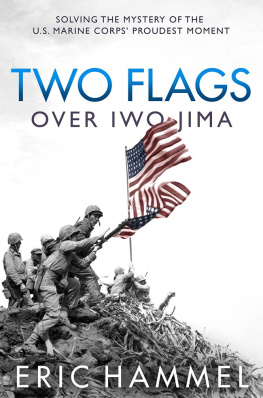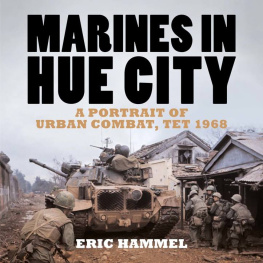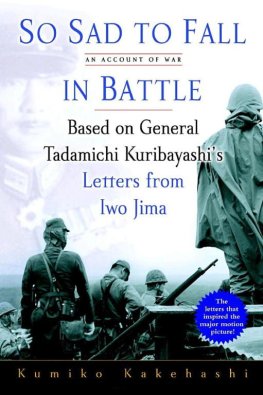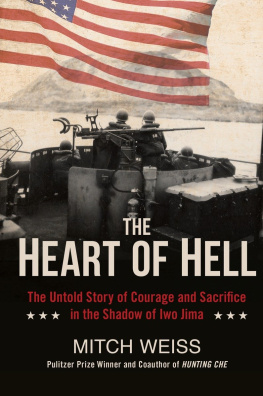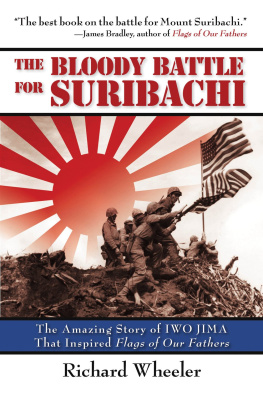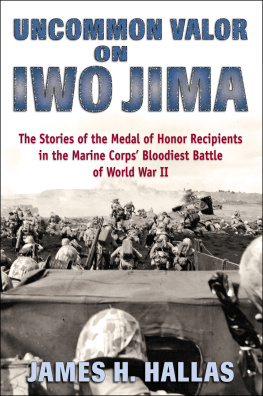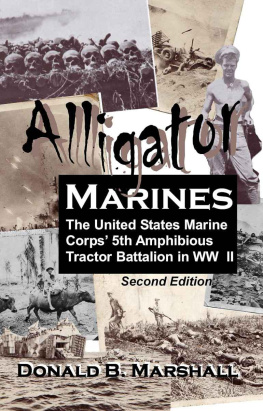The Last Siege

TWO FLAGS OVER IWO JIMA
TWO FLAGS OVER IWO JIMA
Solving the Mystery of the U.S. Marine Corps Proudest Moment
ERIC HAMMEL
Published in the United States of America and Great Britain in 2018 by
CASEMATE PUBLISHERS
1950 Lawrence Road, Havertown, PA 19083, USA
and
The Old Music Hall, 106108 Cowley Road, Oxford OX4 1JE, UK
Copyright 2018 Eric Hammel
Hardcover Edition: ISBN 978-1-61200-629-1
Digital Edition: ISBN 978-1-61200-630-7
Kindle Edition: ISBN 978-1-61200-630-7
A CIP record for this book is available from the British Library
All rights reserved. No part of this book may be reproduced or transmitted in any form or by any means, electronic or mechanical including photocopying, recording or by any information storage and retrieval system, without permission from the publisher in writing.
For a complete list of Casemate titles, please contact:
CASEMATE PUBLISHERS (US)
Telephone (610) 853-9131
Fax (610) 853-9146
Email:
www.casematepublishers.com
CASEMATE PUBLISHERS (UK)
Telephone (01865) 241249
Email:
www.casematepublishers.co.uk
This one is for my brother Mark, with love
Til the last landings made
And we stand unafraid
On a shore no mortal has seen,
Til the last bugle call
Sounds Taps for us all,
Its Semper Fidelis, Marine.
Authors Note
I would like to start with a little story about me and Joe Rosenthals immortal Raising the Flag on Iwo JimaThe Photo. I have no doubt stories similar to this have been repeated again and again in other places and times over the 75 years since The Photos first publication.
In 1955 I was a student in Mrs. Leschess fourth-grade class at Logan Elementary School in Philadelphia. I sat at the last desk in the second row, from which I could look straight out the classroom door to the marble-wainscoted hallway. Opposite the door, and perfectly framed in it from my vantage point, was a large colorized print of The Photo.
I was a good student, and Mrs. Lesches gave me a little slack; I found that I could gaze out the door if she wasnt writing on the blackboard or speaking. So, for the year 1955, I looked out at The Photo every school day, and pretty soon I fell in love with it. I fell in love with my idea of it.
I grew up in the company of World War II vets. My own father was one. I knew an Iwo Jima vet. And I was raised in an especially patriotic time and placepost-war America. It stayed with me. In time I found that I could writeindeed, that I wanted to write. In more time I decided to write for my living. In pretty much no time I began to write military historyspecifically Pacific War history. And so here I am, 64 years and 50 military history books later, relating a personal story that relates to a photo that relates to that especially poignant and nearly magical long-ago moment on far-off Iwo Jima. The Photo wasnt the only thing that brought me to my vocation, and it wasnt the first. But I have no doubt that that school year of staring at it and imagining heroism crystallized all the other events of my youth that brought me here.
Two Flags over Iwo Jima sets its sights on the 28th Marine Regiments self-contained battle for Mount Suribachi, the 556-foot-high volcano at Iwo Jimas southwestern peninsula. As the much larger battle for three airfield sites raged to the north, one of eight reinforced Marine regimental combat teamsno more to start with than 4,500 infantrymen and artillerymen supported by a sprinkling of tracked fighting vehiclesundertook the defeat of more than 1,500 heavily armed, highly motivated, and splendidly fortified Japanese combatants who had all pledged to die in order to hold the highest vantage point on the island.
Joe Rosenthals Raising the Flag on Iwo Jima is, bar none, the best-known image of American war history. Most Americans who have no interest in World War IIor any warare nonetheless able to identify the still image of the rough pyramid of soldiers with the U.S. flag towering above as The Flag Raising On Iwo Jima. And many will admit that this 75-year-old image swells their hearts with joy.
Acknowledgements
First and foremost, I could not have begun this book, much less finish it, without the full-bore support of Barbara Hammel, my wife of more than fifty years. Likewise, Id have been stumped along the way without sage advice from my frend Ted Gradman. Profound thanks to Dick Camp, my pal of more than thirty years, who gave up several days away from his own research to comb archives for material I needed. I also owe a great deal to Walt Ford, the former editor of Leatherneck Magazine, for his deep dives into source material and his good advice arising from a complete read of what I had hoped would be the final draft manuscript. I thank Stephen Foley and Dustin Spence for helping me get many photo captions right and for providing several rare photos.
Assisting me all along the way were the kind and helpful folks manning the Marine Corps History Division and the Marine Corps Unversity Archives at Quantico, Virginia. They are Dr. Jim Ginther, Dr. Fred Allison, and Annette Amerman. Questions about the two flags themselves were answered with alacrity by Owen Conner, the heraldry curator at the National Museum of the Marine Corps.
I particularly want to thank Colonel Mary Reinwald, the current editor of Leatherneck Magazine and a member of the Huly Board. Mary provided a surge of articles and supporting documents that were vital to my gaining perspective on the story of both flag raisings, from the beginning of my research effort and right up to quite literally the last minute, as I was closing down both the research and writing of this book.
Prologue
It all began at a staff briefing aboard ship on the way from Hawaii to Iwo Jima. A three-dimensional table display of Iwo Jima had been set up to provide officers of the 5th Marine Divisions 2nd Battalion, 28th Marine Regiment (28th Marines) with a realistic view of their battalions and regiments area of responsibility in the early phases of the invasion.
Colonel Harry Liversedges reinforced 28th Marines had been given a mission quite different from the other five regimental combat teams assigned to the 4th and 5th Marine divisions. While the rest of Major General Harry Schmidts V Amphibious Corps (VAC) attacked northward to secure Iwo Jimas three airfields, Liversedges force was to attack independently to the south in order to defang and put to use the excellent vantage point afforded by the 556-foot-high Suribachi volcano (also known as Hill 556 after its height in feet).
As the staff and senior officers of the 2nd Battalion, 28th Marines studied the mock-up of the island, someone commented on the steep, rough terrain represented by the volcano, adding that the first Marines to get to the summit would deserve a prize. Someone else quipped, Champagne. At which Captain Dave Severance, Company Es veteran 25-year-old commander, thought to himself that they wouldnt need much champagne because not too many people were going to get up the rugged, well-defended mountain.
The battalion adjutant, Second Lieutenant George Greeley Wells, then spoke up to mention that the current Marine Corps staff manual required that all battalion adjutants carry the United States colors on all operations. Wells added that he had a flag in his possessionprovided by the battalions transport, USS Missoula and that he would provide it, when the moment came, to the first Marines dispatched to climb to the volcanos summit.

